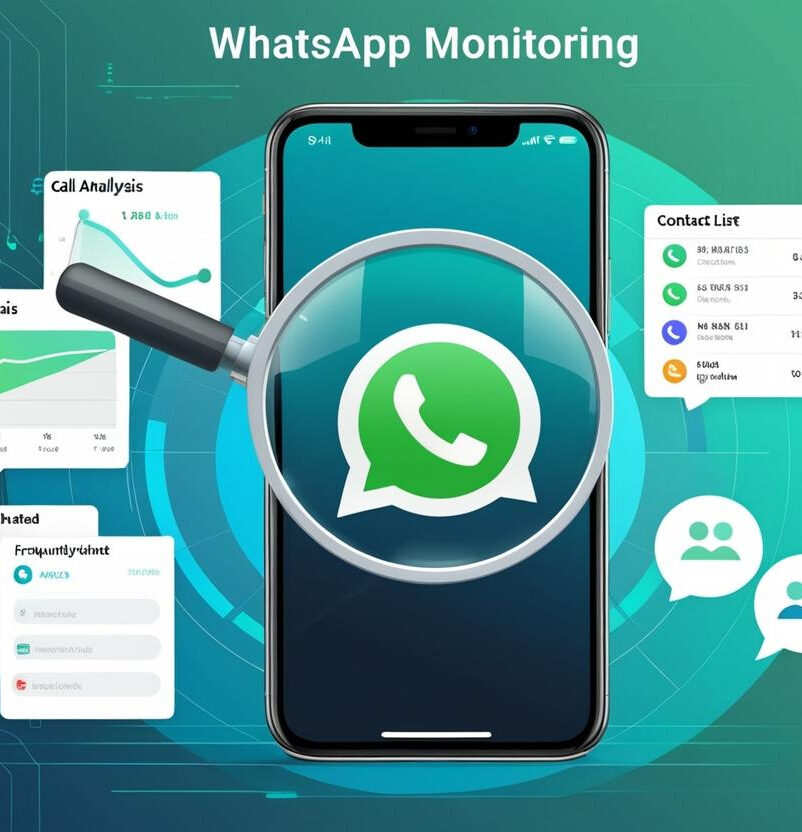Anúncios
Discover the best apps for purchase pattern recognition and frequent buying behavior.
Enhance your business strategies with our comprehensive guide to top consumer analytics tools.
Are You Truly Understanding Your Customers’ Buying Habits?
Did you know that businesses leveraging purchase pattern recognition see a 30% increase in sales compared to those that don’t?
In today’s competitive market, understanding your customers’ frequent and repeated buying behaviors is crucial for crafting effective marketing strategies and boosting customer loyalty.
This article delves into the top apps for purchase pattern recognition, frequent and repeated purchases, providing you with the tools to gain deeper insights into consumer behavior and drive your business forward.
What Are Purchase Pattern Recognition Apps?
Purchase pattern recognition apps are advanced tools that analyze consumer data to identify trends and behaviors in buying habits.
These apps utilize machine learning, data mining, and artificial intelligence to track and interpret frequent and repeated purchases, enabling businesses to make informed decisions based on real-time insights.
Why Do You Need Purchase Pattern Recognition?
Understanding purchase patterns can transform your business in several ways:
• Enhanced Marketing Strategies: Tailor your marketing efforts based on actual buying behaviors.
• Improved Inventory Management: Predict stock levels and reduce overstock or stockouts.
• Increased Customer Loyalty: Personalize offers and rewards to keep customers coming back.
• Optimized Pricing Strategies: Adjust pricing based on purchasing trends and demand.
• Better Product Development: Identify which products are performing well and which need improvement.
Anúncios
Quick Tip:
Leverage Data Segmentation to create targeted marketing campaigns that resonate with specific customer groups based on their buying patterns.
1. Salesforce Einstein Analytics
Overview
Salesforce Einstein Analytics is a powerful AI-driven analytics platform that provides deep insights into customer purchasing patterns, enabling businesses to make data-driven decisions.
Key Features
• Advanced Data Visualization: Interactive dashboards and reports.
• Predictive Analytics: Forecast future buying behaviors based on historical data.
• Integration with Salesforce CRM: Seamlessly integrates with your existing Salesforce setup.
• Automated Insights: AI-powered recommendations for sales and marketing strategies.
Pros
• Comprehensive Integration: Works seamlessly with other Salesforce products.
• User-Friendly Interface: Intuitive dashboards make data analysis accessible.
• Scalable Solutions: Suitable for businesses of all sizes.
Cons
• High Cost: Premium pricing may be a barrier for small businesses.
• Complex Setup: Requires time and expertise to fully leverage all features.
2. Tableau
Overview
Tableau is a leading data visualization tool that helps businesses analyze and visualize purchase patterns to uncover actionable insights.
Key Features
• Interactive Dashboards: Create dynamic and customizable visual reports.
• Data Blending: Combine data from multiple sources for comprehensive analysis.
• Real-Time Data Analysis: Monitor purchasing trends as they happen.
• AI Integration: Utilize AI to enhance data interpretation and forecasting.
Pros
• Highly Customizable: Tailor dashboards to meet specific business needs.
• Strong Community Support: Extensive resources and a vibrant user community.
• Powerful Visualization Tools: Turn complex data into easy-to-understand visuals.
Cons
• Steep Learning Curve: May require training for new users.
• Expensive Licensing: Higher cost for advanced features and larger teams.
Quick Tip:
Use Tableau’s Drag-and-Drop Interface to quickly create insightful visualizations without needing extensive technical knowledge.
3. IBM Watson Analytics
Overview
IBM Watson Analytics leverages artificial intelligence to provide predictive insights and advanced data analytics for understanding purchase patterns.
Key Features
• Natural Language Processing: Interact with the app using plain language queries.
• Predictive Modeling: Identify future buying trends and behaviors.
• Automated Data Preparation: Streamlines the process of cleaning and organizing data.
• Advanced Analytics Tools: Deep dive into customer purchase histories and trends.
Pros
• AI-Powered Insights: Advanced AI capabilities enhance data analysis.
• Ease of Use: User-friendly interface with minimal technical knowledge required.
• Comprehensive Reporting: Detailed reports and visualizations for better decision-making.
Cons
• Limited Customization: Less flexible compared to some competitors.
• Subscription-Based Pricing: Ongoing costs may add up over time.
4. SAS Customer Intelligence
Overview
SAS Customer Intelligence offers robust analytics tools to track and analyze customer purchase behaviors, helping businesses optimize their marketing and sales efforts.
Key Features
• Customer Segmentation: Group customers based on purchasing behaviors and preferences.
• Campaign Management: Track the effectiveness of marketing campaigns.
• Real-Time Analytics: Access up-to-the-minute data on customer interactions.
• Integration with Other SAS Tools: Enhance functionality with a suite of analytics tools.
Pros
• Advanced Analytics Capabilities: Comprehensive tools for deep data analysis.
• Scalable Solutions: Suitable for large enterprises with extensive data needs.
• Strong Support and Training: Extensive resources and customer support.
Cons
• Complex Implementation: Requires significant time and resources to set up.
• High Cost: Premium pricing may be prohibitive for smaller businesses.
5. Zoho Analytics


Overview
Zoho Analytics is a cost-effective analytics platform that helps businesses track and analyze purchase patterns to drive growth and improve customer engagement.
Key Features
• Data Integration: Connects with various data sources, including CRM, e-commerce platforms, and social media.
• Custom Dashboards: Create personalized dashboards to visualize purchase trends.
• AI-Powered Insights: Utilize AI to uncover hidden patterns and trends.
• Collaboration Tools: Share reports and insights with your team easily.
Pros
• Affordable Pricing: Cost-effective solutions for small to medium-sized businesses.
• User-Friendly Interface: Easy to navigate and set up.
• Comprehensive Features: Offers a wide range of analytics tools without breaking the bank.
Cons
• Limited Advanced Features: May lack some of the deeper analytics capabilities of higher-end tools.
• Integration Limitations: Some integrations may require additional setup or third-party tools.
Quick Tip:
Integrate Zoho Analytics with Your E-commerce Platform to automatically sync sales data and get real-time insights into purchase patterns.
Practical Applications and Case Studies
Boosting E-commerce Sales with Salesforce Einstein Analytics
Case Study: Online Retailer Success
An online retailer implemented Salesforce Einstein Analytics to analyze their customers’ purchase patterns.
By leveraging predictive analytics, they identified trends in seasonal buying behaviors and adjusted their inventory accordingly.
This proactive approach led to a 25% increase in sales during peak seasons and a significant reduction in overstocked items.
Enhancing Marketing Strategies with Tableau
Example: Targeted Marketing Campaigns
A mid-sized company used Tableau to visualize customer purchase data.
The interactive dashboards allowed the marketing team to segment customers based on their buying habits and tailor campaigns to specific groups.
This targeted strategy resulted in a 40% increase in campaign effectiveness and higher customer engagement rates.
Improving Customer Retention with IBM Watson Analytics
Case Study: Subscription Service Growth
A subscription-based service utilized IBM Watson Analytics to monitor and analyze frequent purchase patterns of their subscribers.
By identifying key factors that influenced customer retention, they implemented personalized offers and loyalty programs.
This led to a 15% increase in customer retention and a steady growth in their subscriber base.
Quick Tip:
Regularly Update Your Data Models to ensure that your purchase pattern recognition remains accurate and reflects the latest consumer behaviors.
Comparative Table of Top Purchase Pattern Recognition Apps
| App Name | Key Features | Pros | Cons | Best For |
|---|---|---|---|---|
| Salesforce Einstein Analytics | Advanced Data Visualization, Predictive Analytics, Salesforce Integration | Comprehensive Integration, User-Friendly, Scalable | High Cost, Complex Setup | Large Enterprises, Sales Teams |
| Tableau | Interactive Dashboards, Data Blending, Real-Time Analysis | Highly Customizable, Strong Community Support, Powerful Visualization | Steep Learning Curve, Expensive Licensing | Data Analysts, Marketing Teams |
| IBM Watson Analytics | Natural Language Processing, Predictive Modeling, Automated Data Preparation | AI-Powered Insights, Ease of Use, Comprehensive Reporting | Limited Customization, Subscription-Based Pricing | Medium Businesses, Data Scientists |
| SAS Customer Intelligence | Customer Segmentation, Campaign Management, Real-Time Analytics | Advanced Analytics, Scalable, Strong Support and Training | Complex Implementation, High Cost | Large Enterprises, Marketing Departments |
| Zoho Analytics | Data Integration, Custom Dashboards, AI-Powered Insights | Affordable Pricing, User-Friendly, Comprehensive Features | Limited Advanced Features, Integration Limitations | Small to Medium Businesses, Startups |
Frequently Asked Questions (FAQ)
How Do Purchase Pattern Recognition Apps Work?
Purchase pattern recognition apps analyze large sets of customer data using machine learning algorithms and statistical models.
They identify trends, correlations, and patterns in purchasing behavior, providing actionable insights that businesses can use to optimize their strategies.
Are These Apps Suitable for Small Businesses?
Yes, many purchase pattern recognition apps, such as Zoho Analytics, offer scalable solutions that are affordable and user-friendly for small to medium-sized businesses.
These apps provide essential insights without the need for extensive technical expertise.
What Data Do These Apps Require?
These apps typically require access to customer transaction data, including purchase history, frequency, product preferences, and demographic information.
Some apps can also integrate data from CRM systems, e-commerce platforms, and social media channels to provide a comprehensive view of customer behavior.
Can Purchase Pattern Recognition Improve Customer Loyalty?
Absolutely.
By understanding customers’ buying habits, businesses can personalize their interactions, offer targeted promotions, and create loyalty programs that resonate with their audience, thereby enhancing customer satisfaction and loyalty.
What Are the Benefits of Using AI in Purchase Pattern Recognition?
AI enhances the accuracy and depth of data analysis, enabling businesses to uncover hidden patterns and make more precise predictions.
AI-powered tools can process vast amounts of data quickly, providing real-time insights that help businesses respond to market changes promptly.
Quick Tip:
Ensure Data Privacy Compliance by adhering to regulations like GDPR and CCPA when using purchase pattern recognition apps to protect your customers’ information and build trust.
Practical Applications and Case Studies
Boosting E-commerce Sales with Salesforce Einstein Analytics
Case Study: Online Retailer Success
An online retailer implemented Salesforce Einstein Analytics to analyze their customers’ purchase patterns.
By leveraging predictive analytics, they identified trends in seasonal buying behaviors and adjusted their inventory accordingly.
This proactive approach led to a 25% increase in sales during peak seasons and a significant reduction in overstocked items.
Enhancing Marketing Strategies with Tableau
Example: Targeted Marketing Campaigns
A mid-sized company used Tableau to visualize customer purchase data.
The interactive dashboards allowed the marketing team to segment customers based on their buying habits and tailor campaigns to specific groups.
This targeted strategy resulted in a 40% increase in campaign effectiveness and higher customer engagement rates.
Improving Customer Retention with IBM Watson Analytics
Case Study: Subscription Service Growth
A subscription-based service utilized IBM Watson Analytics to monitor and analyze frequent purchase patterns of their subscribers.
By identifying key factors that influenced customer retention, they implemented personalized offers and loyalty programs.
This led to a 15% increase in customer retention and a steady growth in their subscriber base.
Quick Tip:
Utilize Predictive Analytics to anticipate future buying trends and adjust your business strategies proactively, ensuring you stay ahead of the competition.
Expert Insights
Dr. Michael Chen, a data analytics expert, states, “Purchase pattern recognition apps are indispensable for modern businesses.
They not only help in understanding customer behavior but also in predicting future trends, allowing companies to stay ahead of the competition and meet customer needs more effectively.”
Benefits Summary
• Enhanced Marketing Strategies: Tailor your campaigns based on accurate purchase data.
• Improved Inventory Management: Optimize stock levels to meet customer demand.
• Increased Customer Loyalty: Personalize offers to encourage repeat purchases.
• Optimized Pricing Strategies: Adjust pricing based on purchasing trends.
• Better Product Development: Focus on products that resonate with your audience.
• Data-Driven Decision Making: Make informed business decisions backed by real-time data.
• Higher Sales and Revenue: Leverage insights to drive sales growth and profitability.
Ready to transform your business with insightful purchase pattern recognition?
Explore the top apps today and start leveraging data to boost your sales and customer satisfaction.
Discover More about how these tools can revolutionize your business strategies!
Related Topics
• Data Analysis
• Consumer Behavior
• Digital Marketing
• Artificial Intelligence
• Sales Management



